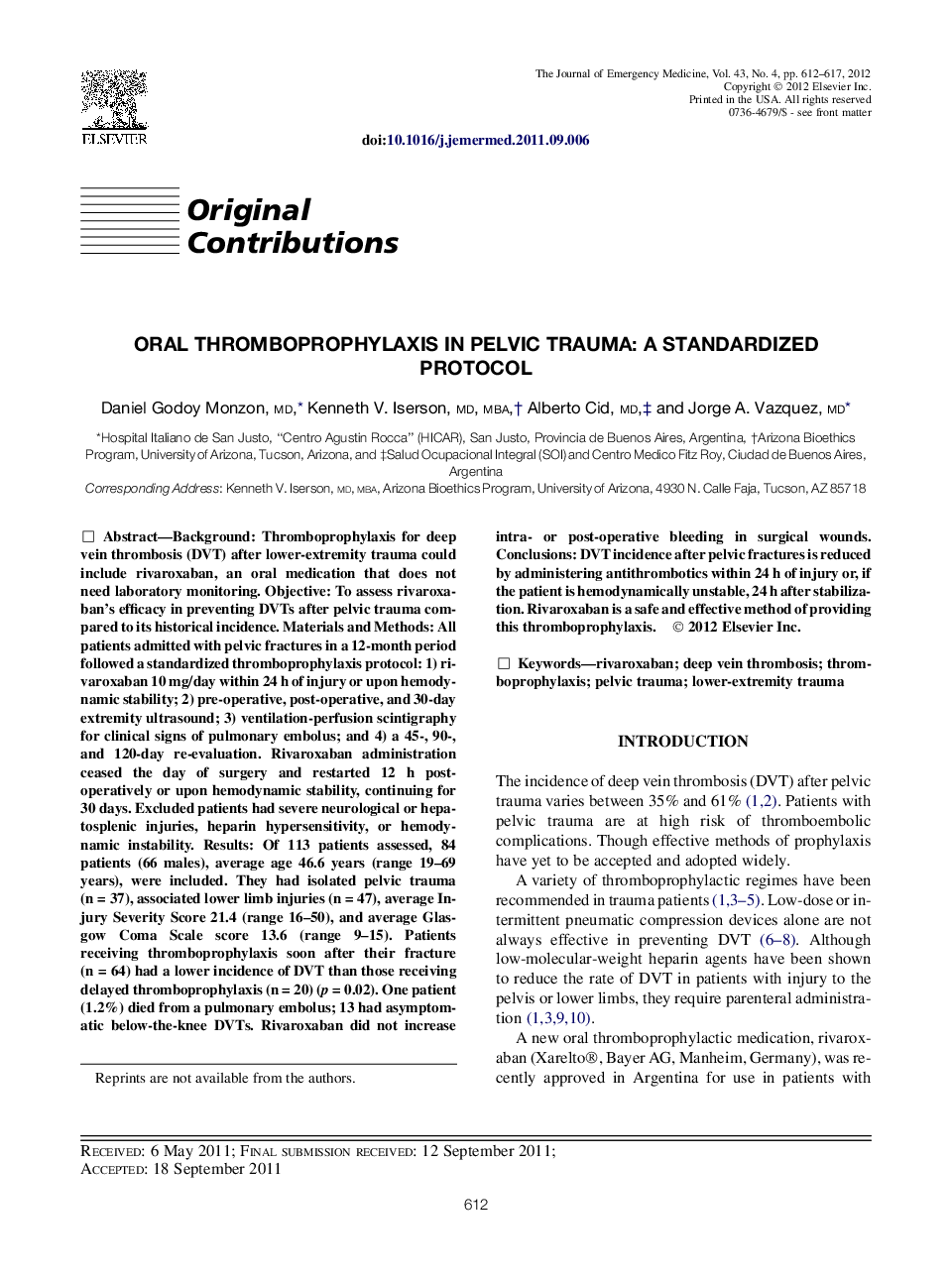| کد مقاله | کد نشریه | سال انتشار | مقاله انگلیسی | نسخه تمام متن |
|---|---|---|---|---|
| 3248975 | 1589156 | 2012 | 6 صفحه PDF | دانلود رایگان |

BackgroundThromboprophylaxis for deep vein thrombosis (DVT) after lower-extremity trauma could include rivaroxaban, an oral medication that does not need laboratory monitoring.ObjectiveTo assess rivaroxaban’s efficacy in preventing DVTs after pelvic trauma compared to its historical incidence.Materials and MethodsAll patients admitted with pelvic fractures in a 12-month period followed a standardized thromboprophylaxis protocol: 1) rivaroxaban 10 mg/day within 24 h of injury or upon hemodynamic stability; 2) pre-operative, post-operative, and 30-day extremity ultrasound; 3) ventilation-perfusion scintigraphy for clinical signs of pulmonary embolus; and 4) a 45-, 90-, and 120-day re-evaluation. Rivaroxaban administration ceased the day of surgery and restarted 12 h post-operatively or upon hemodynamic stability, continuing for 30 days. Excluded patients had severe neurological or hepatosplenic injuries, heparin hypersensitivity, or hemodynamic instability.ResultsOf 113 patients assessed, 84 patients (66 males), average age 46.6 years (range 19–69 years), were included. They had isolated pelvic trauma (n = 37), associated lower limb injuries (n = 47), average Injury Severity Score 21.4 (range 16–50), and average Glasgow Coma Scale score 13.6 (range 9–15). Patients receiving thromboprophylaxis soon after their fracture (n = 64) had a lower incidence of DVT than those receiving delayed thromboprophylaxis (n = 20) (p = 0.02). One patient (1.2%) died from a pulmonary embolus; 13 had asymptomatic below-the-knee DVTs. Rivaroxaban did not increase intra- or post-operative bleeding in surgical wounds.ConclusionsDVT incidence after pelvic fractures is reduced by administering antithrombotics within 24 h of injury or, if the patient is hemodynamically unstable, 24 h after stabilization. Rivaroxaban is a safe and effective method of providing this thromboprophylaxis.
Journal: The Journal of Emergency Medicine - Volume 43, Issue 4, October 2012, Pages 612–617